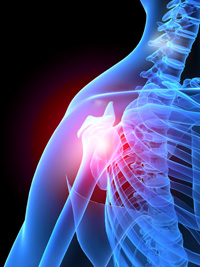Chiropractic Techniques
Dr. Bruno has been serving the D.C. Metropolitan community for 20 years. He provides advanced spinal correction utilizing safe, comfortable and effective chiropractic techniques.
X-Rays
Should your condition warrant the need for radiograph studies and you do not have any recent films of the involved region, the office is equipped to take and process them on premises.
Diversified Technique
This is an adjusting style that encompasses hands-on moves taken from a variety of Chiropractic techniques developed over many years by some of the best in our profession. High velocity, low amplitude force is delivered in a specific direction to the involved vertebrae to reduce subluxation, increase joint mobility, and restore more normal function. The speed, depth and direction of the thrust is the result of years of practice experience and a thorough understanding of spinal biomechanics.
Cox Flexion/Distraction
Dr. James Cox is the founder of this non-force, very gentle, effective adjusting technique. The doctor uses a specially designed table that allows him to manually traction the involved spinal segments with the patient lying face down in the horizontal position. The manual, gentle series of pumping movements decompresses the involved disc, opens and re-aligns the facets (joints), and opens the canals where the nerves exit between the involved vertebrae. This is a wonderful form of spinal decompression that has proven effective in the treatment of herniated discs, sciatic pain, facet syndromes and other spinal problems. This technique has kept many people from requiring surgical intervention.
Instrument Adjusting
An Activator (a hand-held spring loaded instrument) or an Arthrostim (a motor driven, pulsating device) is used to deliver an adjustment to reduce subluxation, increase joint mobility, and allow for more normal function of the involved area. Both instruments gently deliver a high-velocity, low-amplitude, mechanized thrust to the targeted segment. Instruments are extremely effective when adjusting shoulders, elbows, wrists, knees or other joints. The Arthrostim delivers a series of thrusts at a rate of approximately 12 to 14 beats per second, whereas the Activator must be manually operated for each thrust. Both instruments are quite gentle and very well-tolerated by patients.
